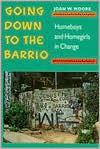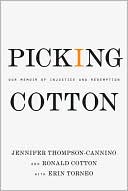Going down to the Barrio: Homeboys and Homegirls in Change
Search in google:
Vivid primary accounts of post-Civil War life by planters and freed slaves complement this study of the rise of southern sharecropping. Edward Royce employs both historical ... Library Journal This sequel to Homeboys: Gangs, Drugs, and Prisons in the Barrios of Los Angeles (Temple Univ. Pr., 1978) is based on continuing research begun by Moore and Carlos Garcia. It traces the 45 years of two Chicano youth gangs in Los Angeles. Through analysis of economic trends and hundreds of trenchant interviews, she has unearthed evidence that the stereotypes of Hispanic youth gangs promoted by the media are mistaken and alarmist. Hers is one of the few studies to cover girl gangs in depth. She offers copious statistics to show that what changed these gangs from primarily ethnic social groups to many that deal in drugs and crime was the increased unemployability of young barrio men. Index, bibliography, notes, charts, methods, and somewhat dry text indicate that this is aimed at the scholarly and professional community.-- Anne Osborn, Youth Training Sch., Ontario, Cal.
\ From the Publisher"This book makes a number of important and new contributions to our knowledge of gangs and is extremely timely. Among its major contributions is its balance in attention to both male and female gangs, and a view gang behavior over three generations which affords insights into changes and continuities in gang activity that are just not available elsewhere."\ —William Kornblum, Professor of Sociology, City University of New York Graduate Center\ \ \ \ \ \ Library JournalThis sequel to Homeboys: Gangs, Drugs, and Prisons in the Barrios of Los Angeles (Temple Univ. Pr., 1978) is based on continuing research begun by Moore and Carlos Garcia. It traces the 45 years of two Chicano youth gangs in Los Angeles. Through analysis of economic trends and hundreds of trenchant interviews, she has unearthed evidence that the stereotypes of Hispanic youth gangs promoted by the media are mistaken and alarmist. Hers is one of the few studies to cover girl gangs in depth. She offers copious statistics to show that what changed these gangs from primarily ethnic social groups to many that deal in drugs and crime was the increased unemployability of young barrio men. Index, bibliography, notes, charts, methods, and somewhat dry text indicate that this is aimed at the scholarly and professional community.-- Anne Osborn, Youth Training Sch., Ontario, Cal.\ \








